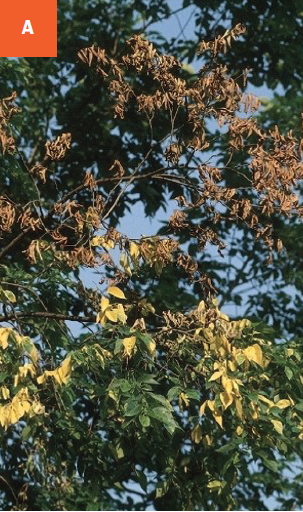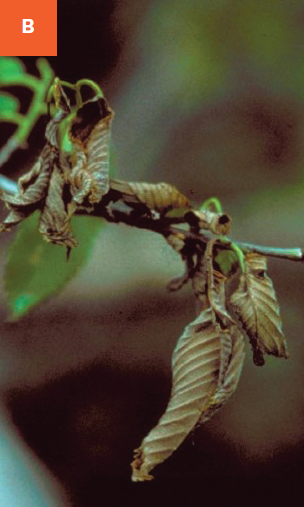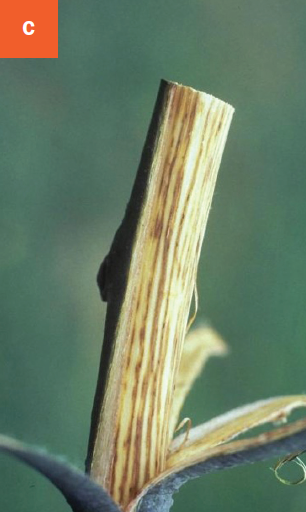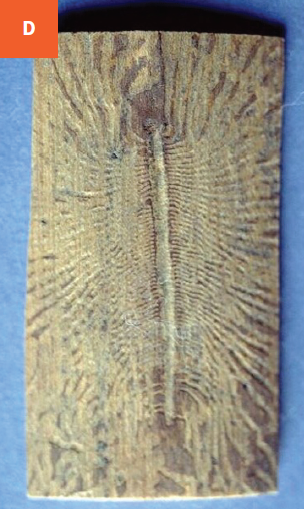Dutch Elm Disease
Ophiostoma novo-ulmi and Ophiostoma ulmi (fungi)
HOST American elm, European elm
DAMAGE/SYMPTOMS Starting in summer, leaves on infected branches of the upper canopy curl up, wilt, and turn a grayish-green or yellow color (“flagging”). As the disease progresses, adjacent branches show similar symptoms and major dieback in the canopy may become visible. Distinct longitudinal brown streaks are visible in the wood underneath the bark. Drought stress may intensify symptom development.
DISEASE CYCLE The pathogens overwinter in infected trees and are spread by the native elm bark beetle, the European elm bark beetle, and through root grafts. Beetles breed under the bark of dying or dead elm trees, including diseased trees. Hatching larvae feed on the inner bark and sapwood and form a distinct gallery network. Ophiostoma spp. grow in those galleries and spores attach to the adult beetles as they emerge to fly to new trees. As the beetles feed on new elm trees, spores are transferred to xylem vessels of trees where they germinate and grow into the water-conducting system. Root grafts, the connection of infected roots with healthy roots, can spread the disease by transferring infected water to healthy trees.
MANAGEMENT Plant only resistant varieties. Starting mid-June, scout for any flagging in the upper canopy. Immediately prune out and destroy any symptomatic branches and check for vascular discoloration. Disinfect pruning tools between cuts with 70% ethyl alcohol or a standard household disinfectant spray. High value trees may be treated with fungicide injections. Contact your local Extension professional for specific recommendations.
A Branch dieback on elm tree due to Dutch elm disease. B Dieback of young shoot on an elm tree. C Brown discoloration of infected wood underneath bark. D Feeding galleries of bark beetle larva in wood.




